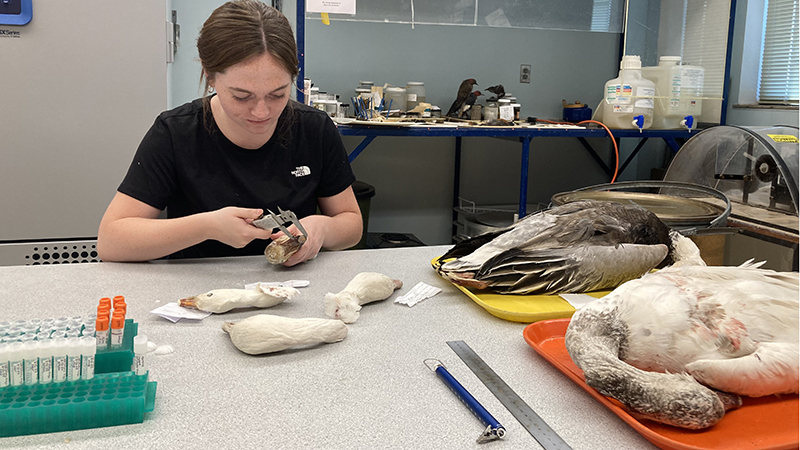
By Ronica Stromberg
When it comes to snow geese and Ross’s geese, birds of a feather may not always flock together. Ava McQuillen, a junior in the School of Natural Resources, is studying a likely intermingling of the two species.
Both bird species have white feathers with black tips, but snow geese are generally larger, have longer necks, and have bills differing several ways from those of Ross’s geese. A key one is their grin patch, with the section where the bill meets being curved rather than straight like those of the Ross's geese.
At least that was the case historically. Since the 1970s, more geese with features of each species have joined the flock. Some Ross's geese now go through a “blue phase” that is rare for them but common for snow geese. In it, their heads are white but their bodies have dark plumage.
Since May, McQuillen has been looking into the loosey-goosey definitions of the species by taking measurements and DNA samples from historical specimens of both bird species. The fisheries and wildlife major from Bellevue has been using the collections of the University of Nebraska State Museum to measure features on about 100 heads of light geese, a term that includes both snow geese and Ross's geese. She has tail feathers collected by the U.S. Fish and Wildlife Service from hunters. She also has from various agencies more than 700 historical breast samples from both species to draw DNA from.
Read the rest of the article at https://snr.unl.edu/aboutus/what/newstory.aspx?fid=1187